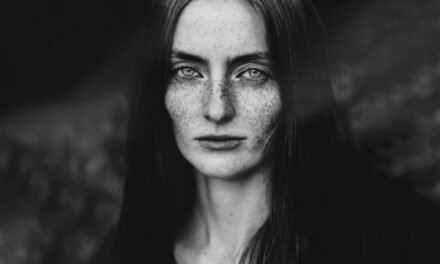Francesco Primaticcio, born in 1504 in Bologna, Italy, emerged from a milieu rich in artistic tradition. His early life was steeped in the vibrant culture of the Italian Renaissance, a period characterised by a flourishing of the arts, science, and humanism. Growing up in Bologna, a city renowned for its educational institutions and artistic heritage, Primaticcio was exposed to the works of prominent artists and thinkers of his time.
His formative years were likely influenced by the teachings of the local masters, who instilled in him a profound appreciation for classical antiquity and the emerging techniques of the Renaissance. Primaticcio’s formal education in art began under the tutelage of notable painters such as Francesco Francia and perhaps even the illustrious Raphael. These early influences would shape his artistic vision and technical prowess.
As he honed his skills, Primaticcio developed a keen interest in the interplay of light and shadow, as well as the human form, which would later become hallmarks of his style. His education was not merely confined to the studio; he also immersed himself in the study of classical texts and the works of ancient sculptors, which would inform his understanding of proportion and composition.
Summary
- Francesco Primaticcio was born in Bologna, Italy, in 1504 and received his early education in the arts in his hometown.
- Primaticcio’s career in Italy saw him working with renowned artists such as Giulio Romano and assisting in the decoration of the Palazzo del Te in Mantua.
- His move to France in 1532 had a significant influence on French art, introducing the Mannerist style and contributing to the development of the School of Fontainebleau.
- Primaticcio’s works at Fontainebleau, including the Gallery of Ulysses, showcased his mastery of fresco painting and decorative arts.
- Primaticcio’s style was characterised by elegant figures, elongated proportions, and a sense of movement, influencing later artists such as Peter Paul Rubens and Nicolas Poussin.
Career in Italy
Primaticcio’s career began to take shape as he established himself within the vibrant artistic community of Italy. His early works reflected the influence of the Mannerist style that was gaining popularity during this period. Mannerism, with its emphasis on elongated forms and complex poses, allowed Primaticcio to experiment with new ideas and techniques.
His ability to blend traditional Renaissance ideals with innovative approaches set him apart from his contemporaries. In the 1530s, Primaticcio’s reputation grew as he undertook significant commissions that showcased his talent. His work on frescoes and altarpieces demonstrated not only his technical skill but also his capacity for storytelling through visual art.
The intricate details and vibrant colours in his pieces captivated audiences and patrons alike. It was during this time that he began to develop a distinctive style that would later be recognised as uniquely his own. His early career in Italy laid the groundwork for his subsequent move to France, where he would further refine his artistic voice.
Move to France and Influence on French Art
In 1532, Primaticcio made a pivotal decision to relocate to France, a move that would significantly alter the trajectory of his career. Invited by King Francis I, he was tasked with contributing to the artistic transformation of the French court. This transition marked a turning point not only for Primaticcio but also for French art as a whole.
His arrival heralded the introduction of Italian Renaissance ideals into French artistic practices, which had previously been more insular. Primaticcio’s influence on French art was profound and far-reaching. He brought with him a wealth of knowledge regarding perspective, composition, and the use of colour, which he seamlessly integrated into his new environment.
His work at the Château de Fontainebleau became a focal point for the fusion of Italian and French styles, leading to what is now known as the School of Fontainebleau. This movement was characterised by its elegance and sophistication, with Primaticcio at its helm, guiding a generation of artists who sought to emulate his techniques and vision.
Works at Fontainebleau
At Fontainebleau, Primaticcio undertook some of his most significant projects, transforming the palace into a veritable showcase of Renaissance art. His work there included elaborate frescoes, intricate stuccoes, and grand decorative schemes that adorned the walls and ceilings of various rooms. The Hall of Francis I is particularly noteworthy; it features a stunning ceiling adorned with mythological scenes that exemplify Primaticcio’s mastery of narrative through visual art.
The collaborative nature of the projects at Fontainebleau allowed Primaticcio to work alongside other talented artists, including Rosso Fiorentino. Together, they created an environment that celebrated innovation and creativity. The artworks produced during this period not only reflected their individual styles but also contributed to a cohesive aesthetic that defined the French Renaissance.
Primaticcio’s ability to blend classical themes with contemporary tastes resulted in a unique artistic language that resonated with both the court and the wider public.
Primaticcio’s Style and Techniques
Primaticcio’s style is often characterised by its elegance, dynamism, and intricate detail. He adeptly combined elements of Mannerism with classical influences, resulting in compositions that were both harmonious and visually striking. His figures often exhibit elongated proportions and graceful poses, embodying a sense of movement that draws viewers into the narrative.
This emphasis on fluidity and grace became a defining feature of his work. In terms of technique, Primaticcio was known for his innovative use of colour and light. He employed a rich palette that included vibrant hues and subtle gradations, creating depth and dimension within his compositions.
His mastery of chiaroscuro—the contrast between light and dark—allowed him to model forms with remarkable realism. Additionally, Primaticcio’s skill in fresco painting enabled him to create expansive murals that captivated audiences with their scale and intricacy. His techniques not only showcased his artistic prowess but also influenced subsequent generations of artists who sought to emulate his distinctive approach.
Influence on Later Artists
The impact of Primaticcio’s work extended far beyond his lifetime, influencing a multitude of artists who followed in his footsteps. His innovative techniques and stylistic choices became foundational elements for many painters in France and beyond. Artists such as Nicolas Poussin and Claude Lorrain drew inspiration from Primaticcio’s mastery of composition and use of colour, incorporating these elements into their own practices.
Moreover, Primaticcio’s role in establishing the School of Fontainebleau created a legacy that would shape French art for centuries to come. The blending of Italian Renaissance ideals with local traditions fostered an environment ripe for artistic experimentation. This synthesis encouraged artists to explore new themes and techniques, ultimately leading to the development of distinct movements such as Baroque art in France.
The reverberations of Primaticcio’s influence can be seen in various artistic expressions throughout history, underscoring his significance as a pivotal figure in the evolution of European art.
Legacy and Impact
Primaticcio’s legacy is one marked by innovation and cultural exchange. His contributions to the arts during a transformative period in France helped bridge the gap between Italian Renaissance ideals and French artistic traditions. By introducing new techniques and styles, he played a crucial role in shaping the trajectory of French art history.
The School of Fontainebleau became a beacon for aspiring artists, fostering an environment where creativity flourished. In addition to his artistic achievements, Primaticcio’s influence extended into architecture and decorative arts. His work at Fontainebleau inspired not only painters but also architects and craftsmen who sought to emulate the grandeur of his designs.
The integration of art into architecture became a hallmark of French Renaissance aesthetics, paving the way for future developments in both fields. As such, Primaticcio’s impact can be seen as multifaceted, encompassing not only painting but also broader cultural movements that defined an era.
Notable Works and Collections
Among Primaticcio’s most notable works are the frescoes at Fontainebleau, which remain some of his most celebrated contributions to art history. The Hall of Francis I features an array of mythological figures rendered with exquisite detail, showcasing his ability to convey complex narratives through visual means. Additionally, his collaboration with Rosso Fiorentino on various projects at Fontainebleau resulted in a series of works that exemplify their shared vision for Renaissance art.
Today, many of Primaticcio’s works are housed in prestigious collections across Europe, including the Louvre Museum in Paris and various galleries in Italy. These collections serve as a testament to his enduring legacy and continued relevance within the canon of art history. As scholars and enthusiasts continue to study his contributions, Primaticcio remains an essential figure whose artistry transcends time, inspiring new generations to explore the rich tapestry of European art.
For those interested in exploring different artistic techniques, a fascinating article on layered colored pencil techniques for realistic blending provides valuable insights into creating stunning and lifelike artworks. This article delves into the intricate process of layering colored pencils to achieve a seamless and realistic blending effect, offering a unique perspective on the art of drawing and shading. It complements the detailed guide to the artist Francesco Primaticcio by showcasing another aspect of artistic skill and creativity.
FAQs
Who was Francesco Primaticcio?
Francesco Primaticcio was an Italian Mannerist painter, architect, and sculptor who was active in France during the 16th century. He is best known for his work at the court of King Francis I and his contributions to the School of Fontainebleau.
What is the School of Fontainebleau?
The School of Fontainebleau was a group of artists working at the royal Château de Fontainebleau in France, under the patronage of Francis I. It was a center of artistic production in the late Renaissance and early Mannerist periods, and Primaticcio played a significant role in its development.
What were Primaticcio’s contributions to the School of Fontainebleau?
Primaticcio was instrumental in introducing the Mannerist style to France and played a key role in the decoration of the Château de Fontainebleau. He was known for his frescoes, tapestries, and designs for decorative arts, and his work had a lasting impact on French art and architecture.
What are some notable works by Francesco Primaticcio?
Some of Primaticcio’s most famous works include the frescoes in the Gallery of Ulysses at the Château de Fontainebleau, as well as his designs for the stucco and sculpture decorations in the palace. He also created designs for tapestries and other decorative arts, leaving a significant legacy in the visual arts of the period.
What was Primaticcio’s influence on later artists?
Primaticcio’s work at the School of Fontainebleau had a profound influence on subsequent generations of artists, both in France and beyond. His Mannerist style and innovative approach to decorative arts helped shape the development of European art in the late Renaissance and early Baroque periods.


